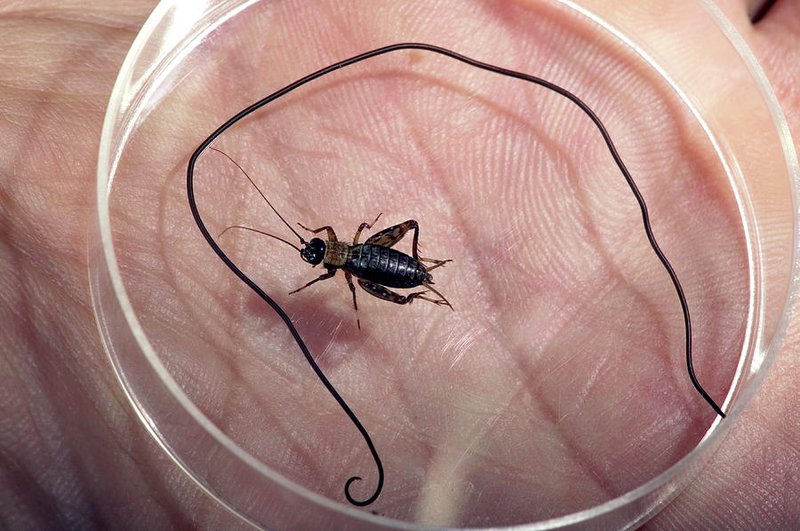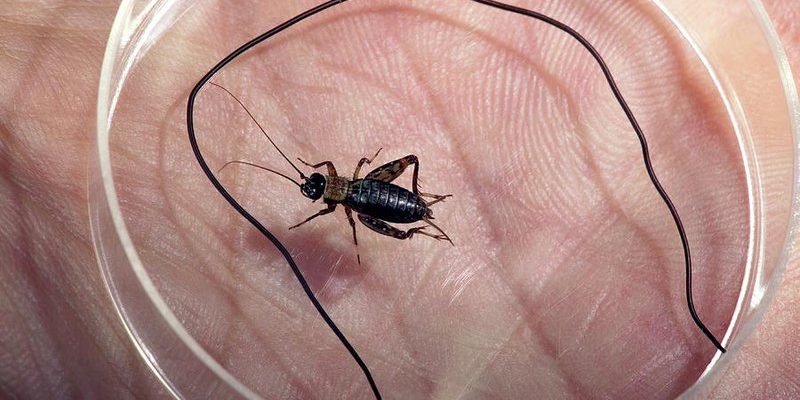
Field studies have been crucial in uncovering the seasonal habits of hairworms. You see, these worms have a way of syncing with the seasons that’s almost poetic. The rhythm of their life cycle ties into environmental changes, making them a prime focus for researchers keen on understanding how animals adapt to their surroundings. In this blog, we’ll dive into what we’ve learned from field research about the seasonal behavior patterns of hairworms.
What Are Hairworms?
So, you might be asking yourself, what exactly is a hairworm? Hairworms, scientifically known as *Nematomorpha*, are a type of parasitic worm that often targets insects, particularly grasshoppers and crickets. Imagine them as tiny manipulators, using a strategy that’s more akin to puppetry than simple survival. Once these worms infect their host, they gain control of its behavior, leading the insect to water sources—the perfect environment for the hairworm to emerge.
The adult hairworm emerges from the host after a period of growth inside, often resulting in the host’s demise. This may sound cruel, but it’s a fascinating example of how some organisms have evolved to survive and thrive within specific ecological niches. The hairworm’s life cycle can be broken down into several phases, from eggs to larvae to adults, and each stage has its own seasonal patterns that researchers are eager to understand.
The Life Cycle of Hairworms
The life cycle of hairworms typically progresses through four main stages: egg, larva, pupa, and adult. Each stage has specific behaviors and adaptations that help them survive in their environment.
1. Egg Stage: Hairworm eggs are usually laid in water or moist environments. Here, they wait for the right host, often a grasshopper.
2. Larval Stage: Once the eggs hatch, the young hairworms seek out a host. This stage is where they start to establish their influence, slowly manipulating the host’s behavior.
3. Pupal Stage: Inside their host, hairworms grow and develop into pupae. This is a crucial part of their life cycle, where they continue to influence their host’s behavior.
4. Adult Stage: Finally, when the hairworm is ready to emerge, it triggers the host to jump into water, where it can break free and begin the cycle again.
Each of these stages presents unique challenges and adaptations, especially as seasonal changes affect their environment.
Seasonal Synchronicity
Hairworms are known for their remarkable ability to synchronize their life cycle with seasonal changes. Think about how some animals hibernate or migrate with the seasons; hairworms have their own version of this natural rhythm. Field studies have shown that the emergence of adult hairworms peaks during certain times of the year, particularly in warmer, wetter months.
Researchers have found that environmental factors, like temperature and rainfall, strongly influence the timing of hairworm emergence. For example, during late spring and early summer, when conditions are just right, you might see a significant spike in adult hairworm populations. This synchronicity ensures they time their emergence with the availability of hosts—making it a double win for survival.
Behavioral Changes in Hosts
As hairworms infect their hosts, noticeable behavioral changes occur. In the early stages of infection, the host may display minor alterations, like increased activity. But as the hairworm matures within, it starts to exert more control. You might be wondering, how does this happen? It’s believed that the hairworm releases chemicals that affect the host’s nervous system, essentially turning it into a puppet.
This manipulation peaks just before the hairworm is ready to emerge. The host might suddenly behave erratically—jumping greater distances or seeking out water, all under the influence of its uninvited guest. It’s a dramatic change, where the host’s instincts are overridden. This adaptation is crucial for the hairworm’s survival, as the host needs to be in water for the adult worm to emerge successfully.
Field Studies and Observations
Field studies have played an essential role in documenting the seasonal behavior of hairworms. Researchers often observe grasshopper populations and their interactions with hairworms to gather data. These studies typically take place over several seasons to capture the full cycle of behavior.
During these observations, scientists might record the number of infected hosts in various environments, noting how many individuals jump into water. They also examine how weather patterns correlate with peaks in hairworm emergence. For instance, they might observe that after a heavy rain, there’s a sudden rise in the number of adult hairworms emerging. This data is vital for understanding not just hairworm behavior, but also broader ecological interactions.
The Importance of Understanding Hairworm Behavior
Understanding the seasonal behavior patterns of hairworms isn’t just an academic exercise; it has real-world implications. For one, this knowledge can help us grasp how parasites influence their ecosystems. Hairworms play a role in controlling grasshopper populations, which can impact vegetation and other wildlife.
Additionally, studying hairworms can shed light on parasitic behaviors in different species. It can lead to insights into how parasites evolve and adapt over time. If we understand how these dynamics play out in nature, we can better prepare for ecological changes, especially in the face of climate change.
The Role of Climate Change
As our climate continues to change, the seasonal behaviors of various species, including hairworms, may be affected. Researchers are starting to investigate how shifts in temperature and precipitation patterns may alter the timing of hairworm life cycles. For instance, warmer winters could lead to earlier emergence in spring, which may disrupt the natural balance between hosts and parasites.
Monitoring these changes will be essential for predicting ecological shifts. By keeping track of hairworm behavior, scientists can gain better insight into the health of ecosystems and the impacts of climate change on different species.
In summary, hairworms are more than just odd little creatures—they’re a window into the complexity of our ecosystems. Their seasonal behavior patterns, influenced by environmental changes, offer valuable lessons in adaptation and survival. As we appreciate these tiny manipulators, we also gain a deeper understanding of the world around us and our shared place within it.

